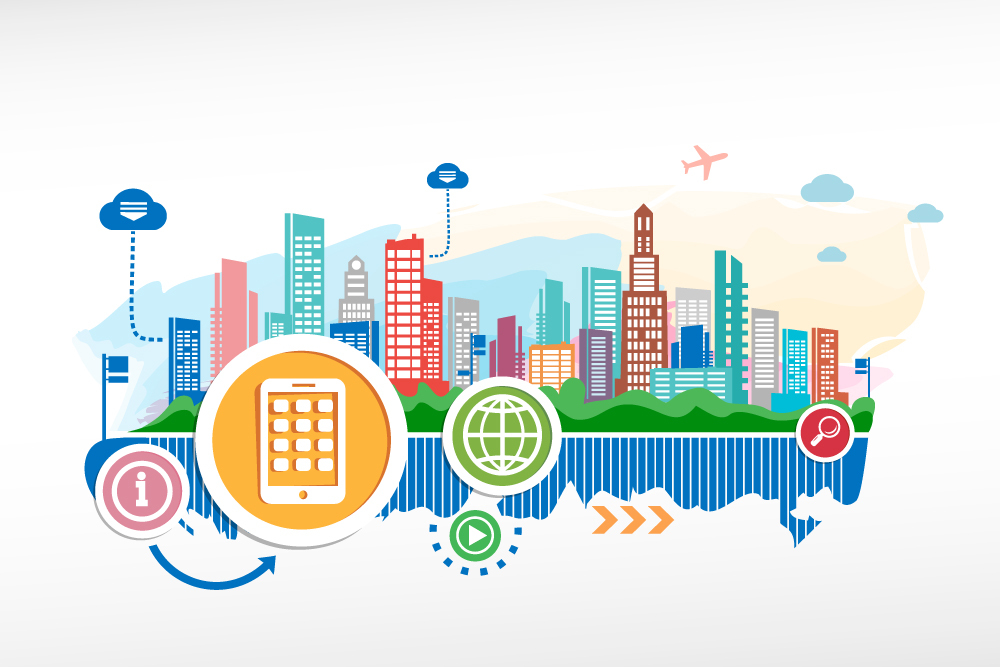The age of the smart city well and truly dawned in 2015. From the first self-driving pods unleashed on the streets of Milton Keynes, to smart parking permits monitoring who uses disabled bays in the City of Westminster, smart city initiatives have gone from concept to fruition.
Beyond the headlines, however, most people remain unclear about what smart city schemes will mean for them. In fact, last year 96% of Brits claimed to know nothing of smart cities in operation in the UK. But in 2016 this will change as we see smart cities become a reality for a massive number of Brits.
While not all of these towns will mirror the futuristic schemes seen in some areas, like a roll-out of driverless cars, connectivity is going to become increasingly important to local authorities, especially in terms of how they provide local services.
Towns and cities across the UK will increasingly look at how connected devices and their subsequent data will help them offer more efficient deployments of public services.
Laying the foundations
While large cities often secure the headlines (and great pockets of government funding), councils and City Mayors are driving much of this sector’s development. This year local governing bodies will continue to feeling the pinch on funding.
It’s therefore becoming increasingly important to the survival of many municipal services to consider how technology can drive greater efficiency and productivity to ensure they can operate in the long term.
Connecting towns and cities is one of the most overlooked innovations of the smart city revolution from a public perspective. With most of us fortunate enough for our homes to be connected to broadband, or have a strong mobile network connection, we often overlook the great difference that area-wide connectivity can make to a town.
> See also: 5 ways to ensure the success of smart city projects
But connectivity is at the heart of every smart initiative, whether it improves the efficiency of refuse collection or transport. It also holds massive potential to stimulate local economies and drive business to small businesses as Internet browsing increasingly determines our choices on what shops to visit and services to buy.
However, it doesn’t always come cheap or easy. Super-fast broadband, for example, boasts the opportunity for councils to provide their services with its all-important high speeds and standards. But the significant investment needed in E1 lines lands towns with hefty bills.
As a result, 2015 saw an increasing number of councils look to open WiFi to connect their town centres, services and citizens. Using these point-to-point and point-to-multipoint wireless technologies, council offices, police stations, fire stations, sheltered housing and businesses across an area can all become interconnected at significantly less expense.
One flagship investment was Watford Borough Council, which rolled out a free, public WiFi network across its town centre and across all its community hubs and sheltered housing.
This investment will continue to provide its citizens with the real advantages that smart cities bring, as they battle digital exclusion, innovate services and harness the data collected to better manage the urban ecosystem (e.g. public transport, local traffic, utilities and education).
Reaping real benefits
With Gartner estimating that 1.6 billion connected things will be in use by smart cities this year (up 39% on 2015), there is little question that we’re going to see a massive increase in the number of towns and the cities looking to greater connectivity to lay down the foundations for improved services and greater community engagement.
Towns and cities on the forefront of this trend will look to see how they can harness the benefits for their citizens immediately through developing consumer facing apps.
These applications will allow the community to get directly involved, for example through reporting problems like broken street lighting, litter, food hygiene issues, flooded drains, and planning breaches. Small businesses could also benefit from these applications, in providing a platform to promote local products and services to the local community.
Such opportunities to drive community participation and inform decision-makers about local issues, increases overall engagement in the region and helps local decision makers understand the true needs and make the right choices to enhance their community.
> See also: How will security attitudes change in the era of the smart city?
2015 saw the conversion of smart cities from a buzzword to a real opportunity for all towns and cities. This trend is only going to continue in 2016 as a greater number of Brits are touched by the opportunities that it holds for our local areas.
Though not every initiative will grab the headlines and while it won’t be the year when every in the UK rolls out driverless cars or smart traffic light systems, 2016 will see a significant number of municipalities looking to area-wide connectivity, and the smart initiatives that it enables, to drive greater efficiency, productivity and community engagement.
Sourced from Natalie Duffield, CEO, intechnologyWiFi










